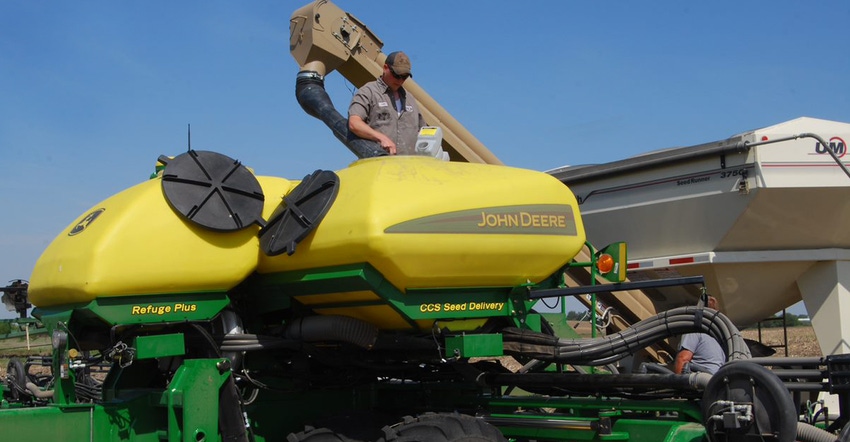May 16, 2019

This spring's rainy and cool weather has slowed corn and soybean planting. As of May 12 in Iowa, soybean planting progress is estimated at 13% complete compared to 31% for the five-year average. The weekly USDA statewide survey shows corn planting is now 48% complete, versus a five-year average of 76%.
However, because of recent rains and corn planting delays, there is concern that soybean planting will soon fall further behind. What is the soybean yield potential, and what are the maturity selection considerations as planting progresses into late May and possibly into June? Mark Licht, Iowa State University Extension agronomist, and Sotirios Archontoulis, ISU assistant professor of integrated cropping systems, provide the following observations and recommendations.
First, to put the 2019 situation in context, they analyzed historical National Agricultural Statistics Service planting date and yield data for Iowa. This analysis showed that if 50% of the state’s soybean planting occurred before May 31, the chance of achieving a high yield is good. In only three of the last 40 years, 50% planting completion occurred after May 31. Among the three years, two were extreme years — 2013 was wet early and then dry later in the growing season, and 1993 was wet throughout the growing season.
Switch to earlier maturity?
Many farmers wonder if they should switch maturities. Do they need to plant an earlier-maturing bean variety than what is normally recommended for their area of Iowa?
ISU research shows it isn’t necessary to switch the soybean maturity group if planting can occur before June 1 in northern Iowa. In southern Iowa, well-adapted varieties can be planted into June, Licht says.
Soybeans have ability to adjust their development when planted late, because they are photoperiod (day length) sensitive. In recent trials conducted at seven ISU research farms over five years, the same soybean variety planted 40 to 60 days apart reached physiological maturity within seven to 10 days of each other.
Moreover, a 0.5 to 1.0 maturity group spread resulted in a difference of only three to five days to reach maturity, the ISU agronomists note.
Online tool helps
To compare more planting date and maturity combinations, and determine the risk of fall frost at more specific regions across Iowa, explore the Soybean Planting Decision Making Tool.
“While it may be early at this point, if planting is delayed past June 15, the decision must be made either to plant soybeans using a shorter-maturity group than the well-adapted maturity for the area, or consider Delayed and Prevented Planting crop insurance provisions,” Licht says.
Planting soybeans after May 20 in Iowa will likely result in lost yield potential of 10% to 50% or more, he notes. For delayed and prevented planting, the late coverage decreases each day from June 16 to July 10. In prevented planting situations, crop insurance language states the “cause of loss must be insurable and common to the area.”
If planting is delayed past June 15, try to determine the remaining soybean yield potential, and the feasibility of delayed and prevented planting options. Talk with crop advisers, Extension field agronomists and insurance providers to gather information to make the best decision given the situation.
About the Author(s)
You May Also Like






